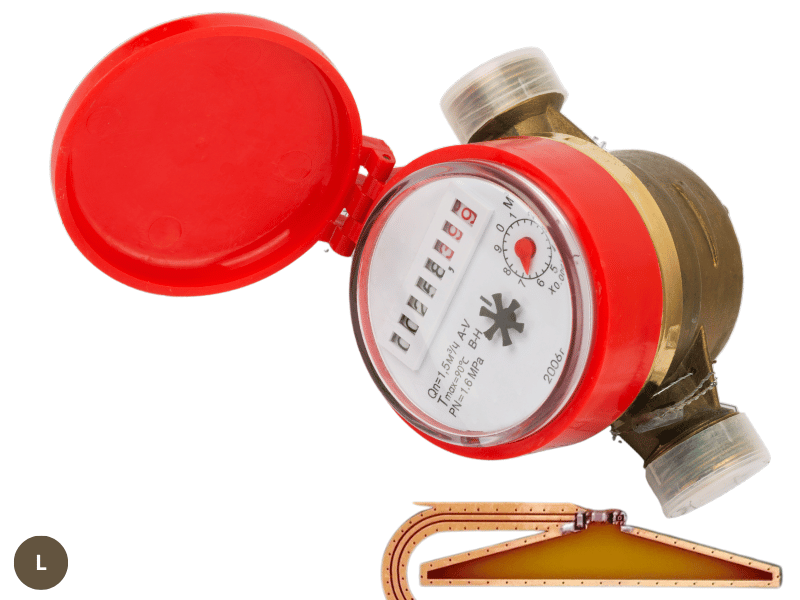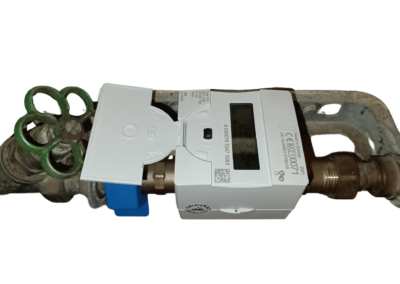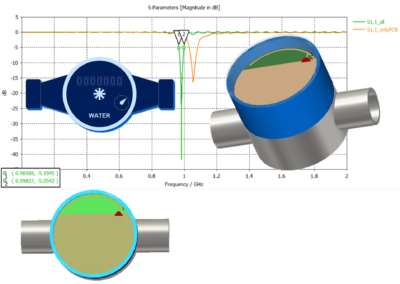Water Meter Antenna
Water Meter Antenna Key Data
- Client: Anonymous in Germany
- Website: TBD
- IoT application: Intelligent water meter with improved radio range
- Employed radio technology: 433 MHz and 868 MHz radio
- Frequency range: 433 MHz, 868 MHz
- Type of antenna: Magnetic Antennity loop antenna
- Task: Improvement of range and manufacturing flexibility of the water meter
- Solution: Replacement of electrical monopole antenna with a magnetic loop antenna
- Special feature: Flexible antenna design enables production for 433 MHz and 868 MHz through simple component change. The antenna was encapsulated with casting resin.
The manufacturer of the water meter faced the challenge of optimising the performance and flexibility of their water meter. Our team developed an innovative antenna solution that achieved both objectives. We replaced the original electrical monopole antenna with a magnetic Antennity loop antenna. This change brought several advantages:
- Improved range: The magnetic antenna shows better performance in environments with high dielectricity, as found in water meters.
- Manufacturing flexibility: The new antenna design allows production of versions for 433 MHz and 868 MHz through simple component changes. This increases production flexibility and reduces inventory costs.
- Optimised performance in encapsulated environments: The magnetic loop antenna is less susceptible to the influences of the casting material, leading to more consistent performance.
A crucial factor in antenna development for encapsulated devices like water meters is the relative permittivity (εr) of the surrounding material. This significantly influences the centre frequency and thus the antenna’s performance:
- Air: εr ≈ 1.00059
In air, antennas work almost as in a vacuum. The wavelength and resonance frequency remain nearly unchanged. - FR4 (typical PCB material): εr ≈ 4.4
FR4 shortens the wavelength by about the factor √4.4 ≈ 2.1. An antenna on FR4 thus needs to be about half the size of a free-space antenna for the same frequency. - Casting resin: εr ≈ 3-6 (depending on composition)
Casting resins can shorten the wavelength by a factor of 1.7 to 2.4. This significantly shifts the antenna’s resonance frequency and must be considered during development.
This solution demonstrates how innovative antenna technology can significantly improve the performance and flexibility of IoT devices, even within the constraints of existing housings and circuit boards.
Various water meters at 868 MHz. The picture on the right shows a design study of a water meter with a classic inverted F antenna.
Optimise Your IoT Devices
Are you looking for ways to improve the radio performance and flexibility of your IoT products? Our team of antenna design experts is ready to develop tailored solutions for your specific challenges. Contact us today to elevate the efficiency and reliability of your devices to a new level.





